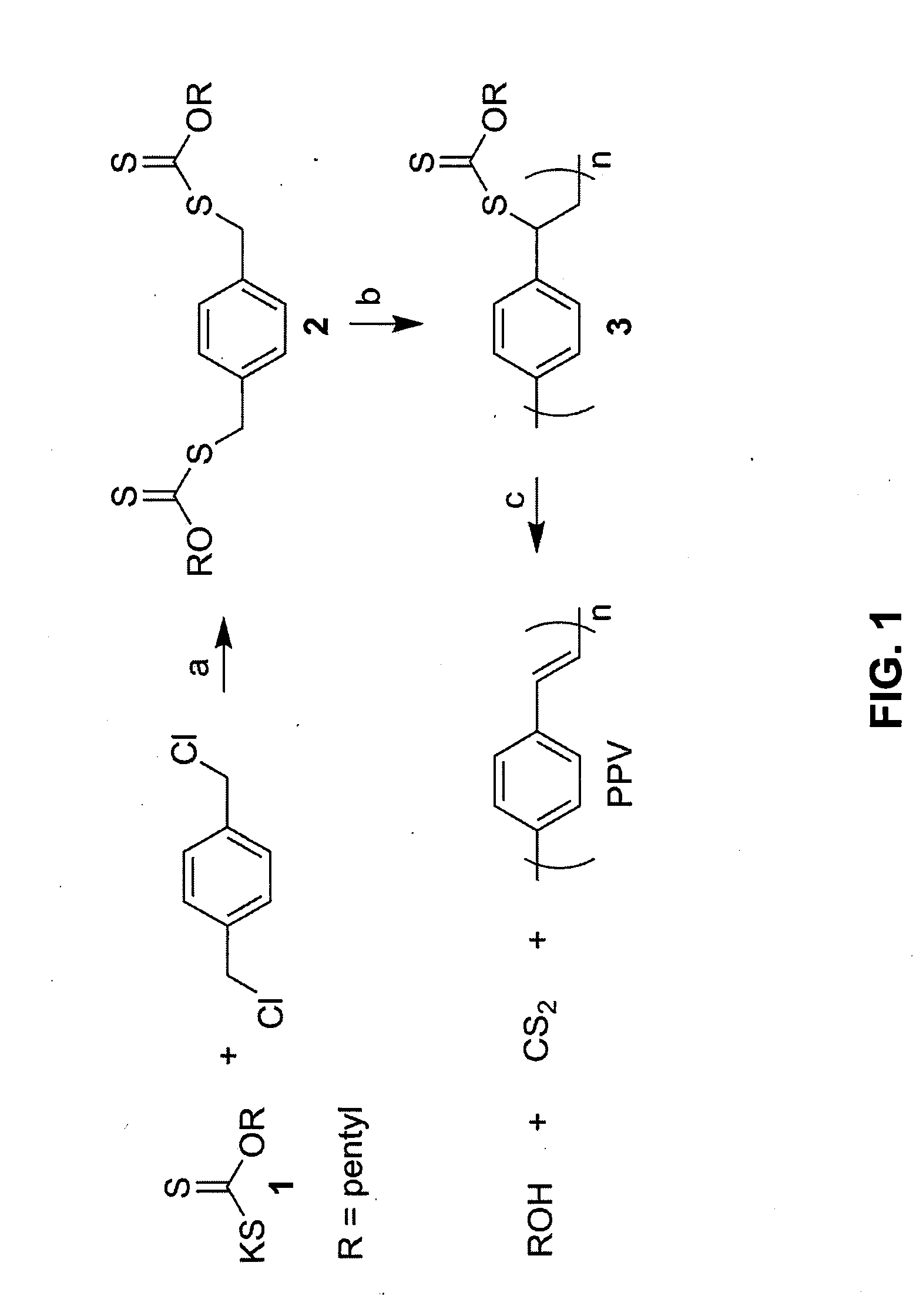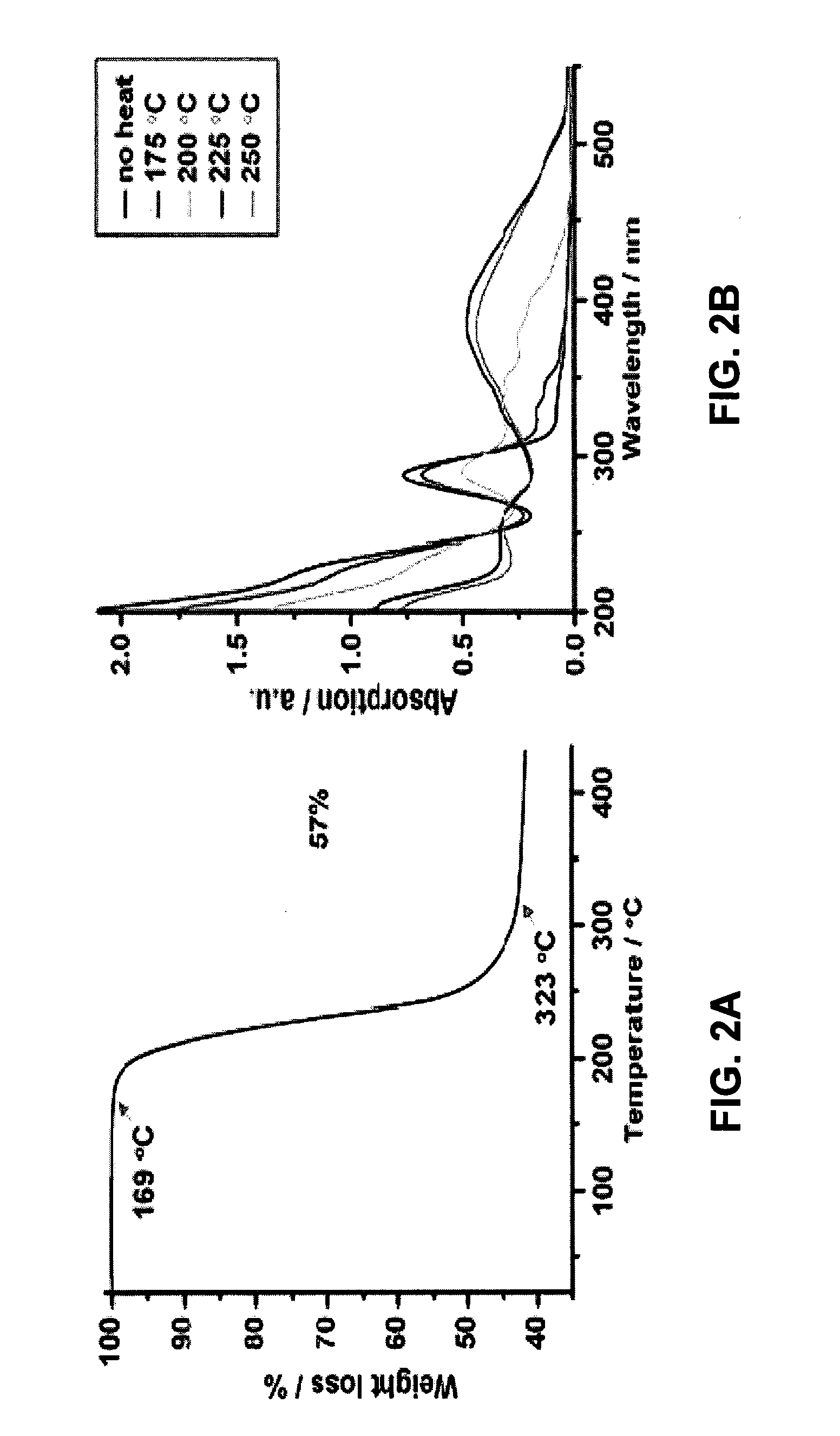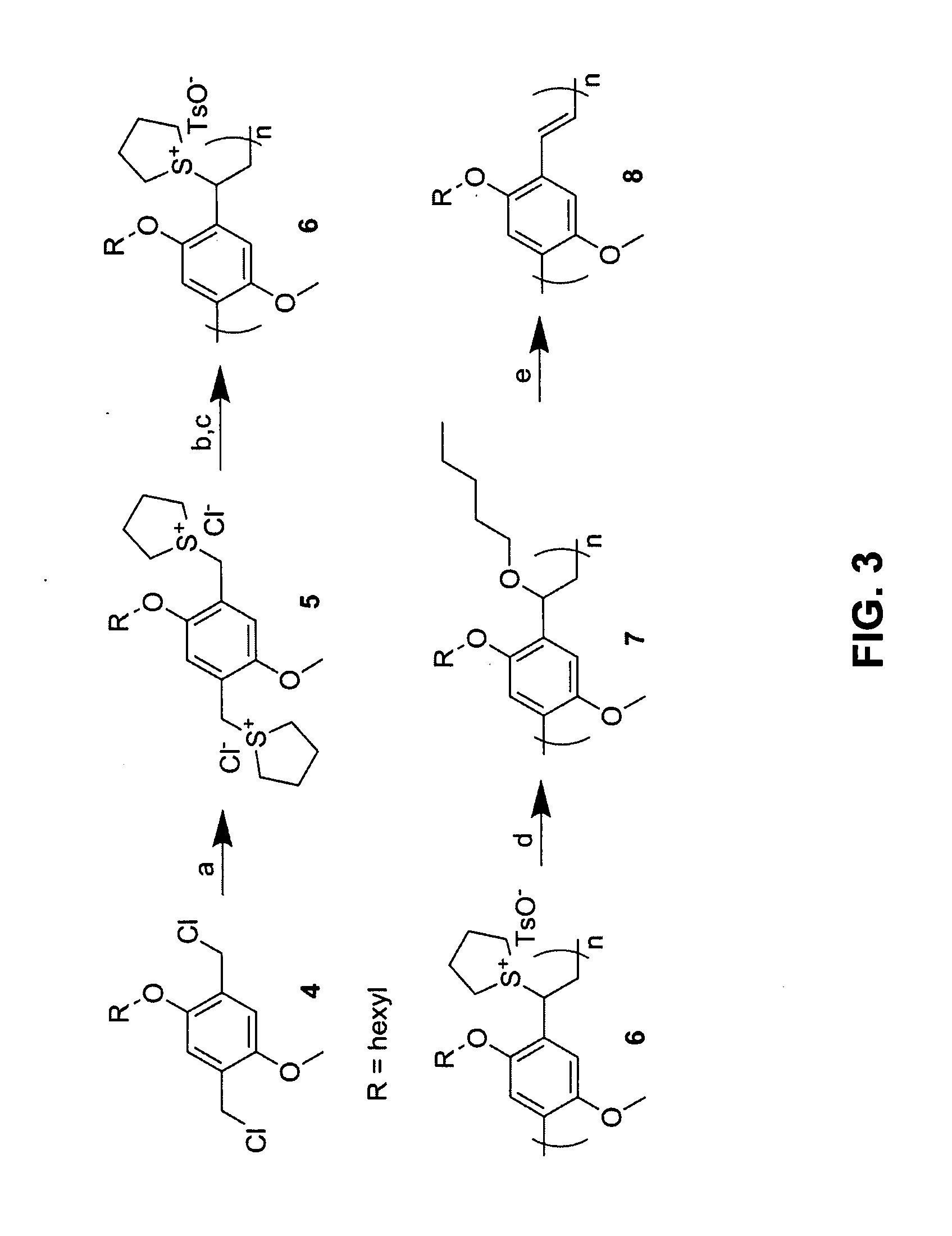Thermally or Photochemically Activated Small Molecule Delivery Platform
- Summary
- Abstract
- Description
- Claims
- Application Information
AI Technical Summary
Benefits of technology
Problems solved by technology
Method used
Image
Examples
Embodiment Construction
[0020]The present invention is directed to the synthesis and characterization of polymer systems that release alcohol lubricants, for example pentanol, at elevated temperatures, and a microhotplate heater that can be used for ‘on-demand’ vapor phase lubrication for MEMS. In order to release an alcohol ‘on-demand’ to a MEMS device, a delivery system needs to be sufficiently robust to withstand not only environmental changes, but also the assembly and packaging conditions of the device. Therefore, the invention is more particularly directed to precursor polymers to poly(p-phenylene vinylenes) (PPV) where the leaving group acts as the lubricant. Using this type of system as a small molecule delivery platform has the advantages that (1) high temperatures (>145° C.) are required to eliminate the lubricant, making the delivery platform stable in most processing environments, (2) a high concentration of lubricant can be incorporated into the polymer (1 molecule of lubricant per repeat unit...
PUM
 Login to View More
Login to View More Abstract
Description
Claims
Application Information
 Login to View More
Login to View More - R&D
- Intellectual Property
- Life Sciences
- Materials
- Tech Scout
- Unparalleled Data Quality
- Higher Quality Content
- 60% Fewer Hallucinations
Browse by: Latest US Patents, China's latest patents, Technical Efficacy Thesaurus, Application Domain, Technology Topic, Popular Technical Reports.
© 2025 PatSnap. All rights reserved.Legal|Privacy policy|Modern Slavery Act Transparency Statement|Sitemap|About US| Contact US: help@patsnap.com



